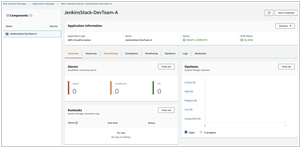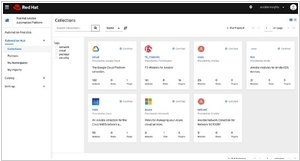AWS CloudFormation vs Ansible
July 30, 2023 | Author: Michael Stromann
See also:
Top 10 Cloud Management platforms
Top 10 Cloud Management platforms
AWS CloudFormation and Ansible are both popular tools used for managing infrastructure and automating cloud resources, but they have fundamental differences in their approach and scope.
AWS CloudFormation is a service provided by Amazon Web Services that allows users to define and provision infrastructure as code. It uses JSON or YAML templates to describe the desired state of AWS resources and services. CloudFormation is tightly integrated with AWS, enabling users to provision and manage a wide range of AWS resources, such as EC2 instances, RDS databases, S3 buckets, and more. It excels at managing complex multi-tiered infrastructures, as it can handle dependencies, ordering, and rollback in case of failures during resource creation or updates. However, CloudFormation is specific to AWS, so it might not be the best choice for managing resources across multiple cloud providers or on-premises environments.
On the other hand, Ansible is an open-source configuration management and automation tool that focuses on simplicity and agentless execution. It uses YAML playbooks to define tasks and configurations, allowing users to manage servers, applications, and other infrastructure components across various environments, including on-premises, cloud, or hybrid setups. Ansible's agentless architecture communicates with target systems over SSH, making it easy to set up and use without requiring additional software on the managed nodes. Unlike CloudFormation, Ansible is not limited to AWS and supports various cloud providers, operating systems, and network devices. It also offers flexibility in the choice of tools and libraries to configure systems, enabling users to customize their automation workflows to suit their needs.
See also: Top 10 Cloud Management platforms
AWS CloudFormation is a service provided by Amazon Web Services that allows users to define and provision infrastructure as code. It uses JSON or YAML templates to describe the desired state of AWS resources and services. CloudFormation is tightly integrated with AWS, enabling users to provision and manage a wide range of AWS resources, such as EC2 instances, RDS databases, S3 buckets, and more. It excels at managing complex multi-tiered infrastructures, as it can handle dependencies, ordering, and rollback in case of failures during resource creation or updates. However, CloudFormation is specific to AWS, so it might not be the best choice for managing resources across multiple cloud providers or on-premises environments.
On the other hand, Ansible is an open-source configuration management and automation tool that focuses on simplicity and agentless execution. It uses YAML playbooks to define tasks and configurations, allowing users to manage servers, applications, and other infrastructure components across various environments, including on-premises, cloud, or hybrid setups. Ansible's agentless architecture communicates with target systems over SSH, making it easy to set up and use without requiring additional software on the managed nodes. Unlike CloudFormation, Ansible is not limited to AWS and supports various cloud providers, operating systems, and network devices. It also offers flexibility in the choice of tools and libraries to configure systems, enabling users to customize their automation workflows to suit their needs.
See also: Top 10 Cloud Management platforms





